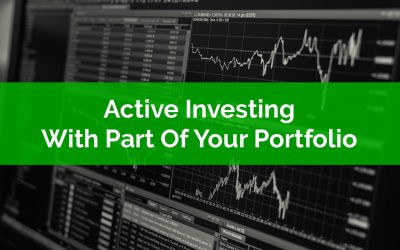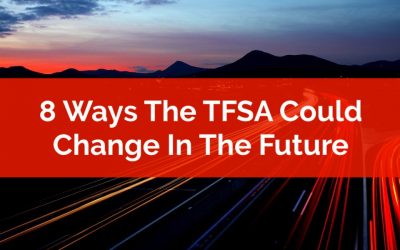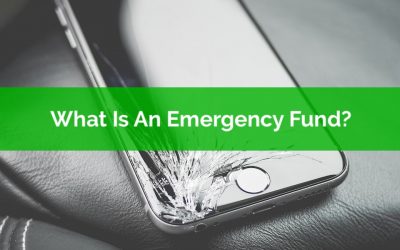Thank you for joining the waitlist!
You’re on the list for early access!
We will contact you via email when we’re ready for you to start your self-directed financial plan. In the mean time here is a quick preview…
Check out our latest blog posts…
Active Investing With Part Of Your Portfolio
In general, there are two types of investing, passive investing, and active investing. Passive investing means purchasing broad index funds that will match market returns at the lowest possible cost. It means focusing on the aspects of investing that are directly in the investors control like investment fees, asset allocation, and diversification.
Active investing, on the other hand, means purchasing specific investments with the hope of outperforming the market over the long run. Active investing can be very appealing and very exciting, but it has its risks. When you’re an active investor there is the possibility of beating the market return and growing your portfolio substantially over time, but there is also the possibility of losing everything.
The issue with active investing is that it generally doesn’t deliver. After investment fees, time, effort etc., the active investment portfolio typically does not outperform the market. In fact, individual investors are known to be very poor active investors, trying to time the market, putting all their eggs in one basket, taking on too much risk etc. etc.
As we’ll see, even the pros don’t have a great track record with active investing. Over a long period of time the majority of actively managed funds fail to outperform their passive peers.
Despite the risk of lower returns, active investing is still very appealing for many investors.
So how do you get the benefit of passive investing with its low fees, high diversification, more consistent returns, and still have a bit of fun with active investing?
The solution is to allocate a small portion of your portfolio to active investing. Basically, the idea is to create your own personal “hedge fund” with a portion of your portfolio. It’s a small amount of money which can be more actively managed without risking your entire nest egg. But how do you do this properly and without risking the rest of your portfolio?
8 Ways The TFSA Could Change In The Future
When you’re thinking about your financial future it’s important to consider risk. There are your typical risks, like the risk of losing money with investments, the risk of passing away unexpectedly, or the risk of not being able to work for an extended period of time. These are all common risks we need to plan for.
But there are also other risks too, ones that many of us might not include in our plans. These risks are less common, more speculative, but can be just as damaging. Risks like changes to government benefits, increasing tax rates, or changes to tax-advantaged accounts like the RRSP and the TFSA.
Based on age alone, the TFSA is relatively young, it’s barely entering the double digits. Although it was only introduced in 2009 it has already experienced a few dramatic changes during that time.
Anticipating changes to tax-advantaged accounts is an important part of any financial plan. A good plan should have enough room to absorb a few of these unexpected changes without causing major stress.
To ensure your plan is robust you need to anticipate these changes and understand how they might impact your plans.
In this post we’re going to speculate on a few ways that the TFSA could change in the future. This is pure speculation but it’s a good exercise to understand what changes might be possible in the future and how your plan can absorb them if they were to actually happen.
What Is An Emergency Fund? Plus 6 Examples Of Why Do You Need One!
Remember when you were a kid and you didn’t have a care in the world? No responsibilities, nothing to worry about, nothing to stress over. Well you can get that feeling again, or close to it, by having an emergency fund.
An emergency fund, or “e-fund”, is amazing! An emergency fund is like a big financial blanket. It helps you stay warm and cozy during a rough financial storm.
You can also think of an emergency fund like a seat belt. Most of the time it’s just there doing nothing… but when an emergency happens your e-fund jumps into action to prevent serious financial harm.
An emergency fund is a pile of money you keep tucked away in a safe place in case of a financial emergency. Your pile of emergency savings should be equivalent to 3-6 months of living expenses, but it can be much smaller to start.
Emergency funds can be smaller if you have high interest debt (which should be a priority), or if you have a strong safety net (ie. parents, friends, relatives that can help provide support or help reduce expenses in an emergency).
Building an emergency fund takes time. It’s something you should contribute to regularly with each paycheck.
Emergencies happen from time to time so your budget should include monthly savings to replenish your e-fund.
To be honest, e-funds are boring. An emergency fund should be invested in a high-interest savings account earning 1-2% interest. This protects the principal but it can also feel very boring. In this case though, boring is good. Boring means that your money will definitely be there when you need it most.
It can be tempting to invest your emergency fund in the stock market…



